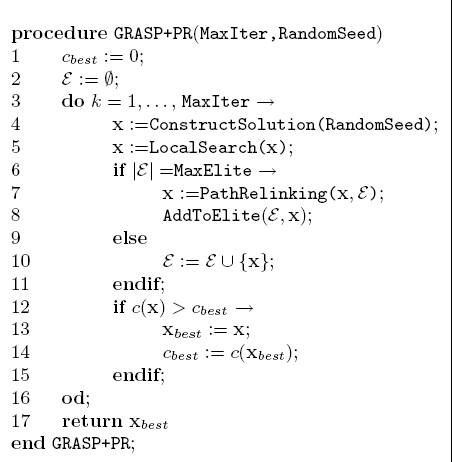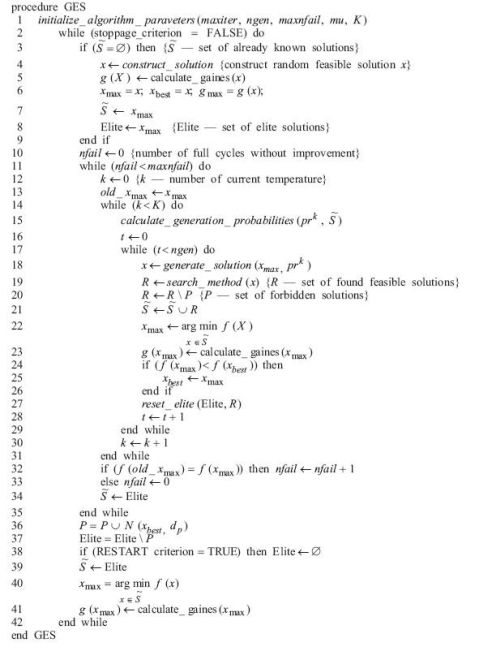专业文献阅读报告的写法
专业文献阅读报告是对某一方面的专题搜集大量情报资料后经综合分析而写成的一种学术论文,它是科学文献的一种。文献阅读报告是反映当前某一领域中某分支学科或重要专题的最新进展、学术见解和建议的它往往能反映出有关问题的新动态、新趋势、新水平、新原理和新技术等等。
要求同学们学写阅读报告,至少有以下好处:
①通过搜集文献资料过程,可进一步熟悉科学文献的查找方法和资料的积累方法;在查找的过程中同时也扩大了知识面;
②查找文献资料、写文献综述是科研选题及进行科研的第一步,因此学习文献综述的撰写也是为今后科研活动打基础的过程;
③通过综述的写作过程,能提高归纳、分析、综合能力,有利于独立工作能力和科研能力的提高;
④文献综述选题范围广,题目可大可小,可难可易。对于毕业设计的课题综述,则要结合课题的性质进行书写。
文献综述与“读书报告”、“文献复习”、“研究进展”等有相似的地方,它们都是从某一方面的专题研究论文或报告中归纳出来的。但是,文献综述既不象“读书报告”、“文献复习”那样,单纯把一级文献客观地归纳报告,也不象“研究进展”那样只讲科学进程,其特点是“综”,“综”是要求对文献资料进行综合分析、归纳整理,使材料更精练明确、更有逻辑层次;“述”就是要求对综合整理后的文献进行比较专门的、全面的、深入的、系统的论述。总之,文献综述是作者对某一方面问题的历史背景、前人工作、争论焦点、研究现状和发展前景等内容进行评论的科学性论文。
写文献综述一般经过以下几个阶段:即选题,搜集阅读文献资料、拟定提纲(包括归纳、整理、分析)和成文。
一、选题和搜集阅读文献
撰写文献综述通常出于某种需要,如为某学术会议的专题、从事某项科研、为某方面积累文献资料等等,所以,文献综述的选题,作者一般是明确的,不象科研课题选题那么困难。文献综述选题范围广,题目可大可小,大到一个领域、一个学科,小到一种算法、一个方法、一个理论,可根据自己的需要而定
选定题目后,则要围绕题目进行搜集与文题有关的文献。关于搜集文献的有关方法,可以如看专著、年鉴法、浏览法、滚雪球法、检索法等等,在此不述。搜集文献要求越全越好,因而最常用的方法是用检索法。搜集好与文题有关的参考文献后,就要对这些参考文献进行阅读、归纳、整理,如何从这些文献中选出具有代表性、科学性和可靠性大的单篇研究文献十分重要,从某种意义上讲,所阅读和选择的文献的质量高低,直接影响文献综述的水平。因此在阅读文献时,要写好“读书笔记”、“读书心得”和做好“文献摘录卡片”。有自己的语言写下阅读时得到的启示、体会和想法,将文献的精髓摘录下来,不仅为撰写综述时提供有用的资料,而且对于训练自己的表达能力,阅读水平都有好处,特别是将文献整理成文献摘录卡片,对撰写综述极为有利。
二、格式与写法
文献阅读报告的格式与一般研究性论文的格式有所不同。这是因为研究性的论文注重研究的方法和结果,特别是阳性结果,而文献综述要求向读者介绍与主题有关的详细资料、动态、进展、展望以及对以上方面的评述。因此文献综述的格式相对多样,但总的来说,一般都包含以下四部分:即前言、主题、总结和参考
文献。撰写文献综述时可按这四部分拟写提纲,再根据提纲进行撰写。
前言部分,主要是说明写作的目的,介绍有关的概念及定义以及综述的范围,扼要说明有关主题的现状或争论焦点,使读者对全文要叙述的问题有一个初步的轮廓。
主题部分,是综述的主体,其写法多样,没有固定的格式。可按年代顺序综述,也可按不同的问题进行综述,还可按不同的观点进行比较综述,不管用那一种格式综述,都要将所搜集到的文献资料归纳、整理及分析比较,阐明有关主题的历史背景、现状和发展方向,以及对这些问题的评述,主题部分应特别注意代表性强、具有科学性和创造性的文献引用和评述。
总结部分,与研究性论文的小结有些类似,将全文主题进行扼要总结,对所综述的主题有研究的作者,最好能提出自己的见解。
参考文献虽然放在文末,但却是文献综述的重要组成部分。因为它不仅表示对被引用文献作者的尊重及引用文献的依据,而且为读者深入探讨有关问题提供了文献查找线索。因此,应认真对待。参考文献的编排应条目清楚,查找方便,内容准确无误。
三、注意事项
由于文献综述的特点,致使它的写作既不同于“读书笔记”“读书报告”,也不同于一般的科研论文。因此,在撰写文献综述时应注意以下几个问题:
⒈搜集文献应尽量全。掌握全面、大量的文献资料是写好综述的前提,否则,随便搜集一点资料就动手撰写是不可能写出好多综述的,甚至写出的文章根本不成为综述。
⒉注意引用文献的代表性、可靠性和科学性。在搜集到的文献中可能出现观点雷同,有的文献在可靠性及科学性方面存在着差异,因此在引用文献时应注意选用代表性、可靠性和科学性较好的文献。
⒊引用文献要忠实文献内容。由于文献综述有作者自己的评论分析,因此在撰写时应分清作者的观点和文献的内容,不能篡改文献的内容。
⒋参考文献不能省略。有的科研论文可以将参考文献省略,但文献综述绝对不能省略,而且应是文中引用过的,能反映主题全貌的并且是作者直接阅读过的文献资料。
总之,一篇好的文献阅读报告,应有较完整的文献资料,有评论分析,并能准确地反映主题内容。
第二篇:文献阅读与选题报告
PAPER 1:A discrete dynamic convexized method for
Inter programming
Journal of Computational and Applied Mathematics 223(2009) 356-373
Wenxing Zhu
aa,*b,Hong Fan Center for Discrete Mathematics and Theoretical Computer,Fuzhou University,Fuzhou 350002,China
bCollege of Mathematics and Computer Science,Fuzhou University,Fuzhou 350002,china 摘要:
在文章中,我们考虑闭包限制非线性整数规划问题。我们给出辅助函数,它与闭包限制非线性整数规划问题有一样的离散全局极小值。在函数的极小化过程中通过增加一个变量的值,使得离散的局部搜索方法可以跳出先前收敛的局部极小值。我们给出找到一个闭包限制非线性整数规划问题的全局极小解的算法。这个算法用随机初始解来极小化辅助函数。我们证明这个算法可以以概率为1渐进收敛。通过大量例子实验可以证明这个算法具有很强的健壮性和有效性。 主要内容:
本文主要从以下5个方面来阐述和分析的研究内容。
1. 问题介绍
主要讲述了整数规划问题的研究领域,如线性整数规划、线性0-1规划和非线性规划问题,而到现在只有非线性整数规划还受到众多关注。非线性整数规划问题的形式如下:
?minf(x)?s.t.g(x)?0,i?Ki??h(x)?0,j?J
?j
?x?In?
K,J是有限下标,In是Rn中的整数集合,f(x),gi(x),i?K,hj(x),j?J:Rn?R 介绍非线性规划在现实世界的应用及非线性规划问题的解决方法等。
2. 定义局部及全局极小值。
非线性规划问题:
?minf(x)(P) ? nnnn?s.t.x?X?I,X是闭包,a,b?R,I是R的整数点集合
定义领域的概念、局部最优、全局最优及三者之间的关系并给出局部搜索算法的思想。
3. 辅助函数及其性质
*假设x1是用局部搜索算法找到的MAX-WSAT问题的当前局部极小解,f*是问
题(MAX-WSAT)的全局最优值,设x0?S是问题(MAX-SAT)的局部极小解且f?x0??f?x?。构造辅助函数的目标是通过解决问题(FMAX-WSAT)找到另一个问
**题(MAX-WSAT)局部极小解x2,使得f(x*)?f(x)。 12
构造问题(MAX-WSAT)的辅助函数:
*??f(x), 当f(x)?f(x1)时; F(x,k)?? *??f(x)?kd(x,x0), 当f(x)?f(x1)时,
其中参数k?0。
构造与问题(MAX-WSAT)有关的辅助非线性整数规划问题如下:
?minF(x,k)(FMAX?WSAT) ?n tx?{0,1}?s..
证明定理及引理、推论。
4. 动态凸方法
算法的主要思想如下:初始化时设k?0,并在解空间中随机选取一个起始点,利用局部搜索算法极小化F(x,k)。如果极小化序列收敛到一个点x,?x0且
*f?x,??f?x1?,则由定理8知,k值太小,通过增大k值并用x,再次搜索极小化
*F(x,k),直到极小化序列收敛到x0或集合x?S:f(x)?f?x1?中的一个解。 ??
如果极小化序列收敛到x0,则我们重复上述过程。如果极小化序列收敛到
?x?S:f(x)?f?x??中的一个解,由定理6得到一个比x小的问题(MAX-WSAT)*
1*1
*的局部极小解。重新设置x1,并再次重复上述过程。
文章中给出了动态凸方法的伪代码,使得读者很容易就明白算法的意图并容易实现。最后证明算法收敛的概率。
5. 数据实验
文章中先讨论参数的取值及辅助函数,着重讨论了当参数取不同值算法的结果。最后对所取的例子进行实验得出结果。
总结
文章中给出了问题(P)的一个辅助函数。这个函数在区间
*{x?X?In:f(x)?f(x1)}中与非线性整数规划问题(P)有相同离散局部极小解
及离散全局极小解。伴随着参数k的增大,极小化T(x,k)可以成功的跳出先前收敛的局部极小解。可以通过设计算法实现在X?In通过极小化T(x,k)来寻找问题(P)的一个离散局部极小解。通过20个不同例子的数据实验可以证明算法的
1
健壮性和有效性
PAPER 2:Guided Local Search for Solving SAT and
Weighted MAX-SAT Problems
Journal of Automated Reasoning 24: 205–223, 2000.
? 2000 Kluwer Academic Publishers. Printed in the Netherlands.
PATRICKMILLS and EDWARD TSANG
Department of Computer Science, University of Essex. e-mail: {millph,edward}@essex.ac.uk
Abstract. In this paper, we show how Guided Local Search (GLS) can be applied to the SAT problem and show how the resulting algorithm can be naturally extended to solve the weighted MAX-SAT problem. GLS is a general, penalty-based meta-heuristic, which sits on top of local search algorithms to help guide them out of local minima. GLS has been shown to be successful in solving a number of practical real-life problems, such as the traveling salesman problem, BT’s workforcescheduling problem, the radio link frequency assignment problem, and the vehicle routing problem. We present empirical results of applying GLS to instances of the SAT problem from the DIMACS archive and also a small set of weighted MAX-SAT problem instances and compare them with the results of other local search algorithms for the SAT problem.
Main contents.
There are 7 parts in this paper,I should briefy describe the conten of every party. 1 .Introduction
Guided Local Search (GLS) is a meta-heuristic, which sits on top of local search procedures for helping them escape from local minima. GLS has been applied to a number of real-life problems,including BT’s workforce scheduling problem, the traveling salesmanproblem, the vehicle routing problem, function optimization, and the radio link frequency assignment problem.
In this paper, we show how GLS can be used to solve the SAT and weighted MAX-SAT problems, by sitting it on top of a local search algorithm, which is similar to GSAT without restarts. We give an evaluation of GLS’s performance on benchmarks from the DIMACS archive, and a set of weighted MAX-SAT problems, comparing the results with the results of similar local search algorithms.
Second.
2. The SAT andWeighted MAX-SAT Problem
The SAT problem and the weighted MAX-SAT problem, are defined as follows:
1) A set of m (Boolean) variables, Z D fx1; x2; : : : ; xmg, each of which may take the values true or false.
2) A set of n clauses, C D C1;C2; : : : ; Cn, each of which is a disjunction of a set of literals (a variable or it’s negation), e.g., x1 _:x2 _ x3. In the weighted MAX-SAT problem, a weight wCi is associated with each clause.
2
3) The goal of the SAT problem is to find an assignment of values to variables, if one exists, where all the clauses are satisfied (evaluate to true) or prove it is unsatisfiable if no valid assignment exists (currently only complete algorithms can prove unsatisfiability). In the
weighted MAX-SAT problem the goal is to minimize the sum of weights of violated clauses.
3. Other Methods Related to GLS
GENET,GSAT,DLM ect.
4.Local Search for the SAT Problem
The local search algorithm is 1-exchange local optimization with dynamic convexized method. This search procedure starts with the current constructed solution x and flips the assignment of the variable that makes the most improvement in weight gain. This is repeated until no flip results in an improvement.
5. Guided Local Search
1) An indicator function, indicating whether the feature is present in the current solution s or not:
Ifi(s)=? present in solution s;?1,if feature ?0,otherwise
2) A cost function cfi.(s), which gives the cost of having the feature present in the solution s (in the SAT and MAX-SAT problems; this is used only when the search is in a local
minimum).
3) A penalty pfi , initially set to 0, used to penalize occurrences of the feature in local minima of the augmented objective function, h. 4) Selective penalty modifications,Util(s,fi)?
ncfi(s)1?pfi
5) Augmented cost function,h(s)?g(s)???Ifi(s)*pfi i?0
6. Guided Local Search for the SAT and MAX-SAT Problems
To use Guided Local Search for the SAT and MAX-SAT problems, a set of features must be defined, and the local search algorithm must be called within the GLS procedure.
by solution s;?1,if clause Ci violated Ifi(s)?? 0,otherwise?
SAT problem;?1,if standard cfi(s)?? MAX-SAT problems?wci,if weighted
7. Empirical Results
The paper give an empirical evaluation of GLSSAT on instances of the SAT problem from the DIMACS archive, and a set of weighted MAX-SAT problems.
Conclusion
Guided Local Search gives good results on most of the SAT instances in the DIMACS
archive, comparable with those of WalkSAT in terms of the number of flips to find a solution and on some problems more reliable in finding solutionsthan WalkSAT. we speculate that
3
GLS will add value to many more local search algorithms, in particular those dealing with soft constraints with varying costs.
PAPER 3:GRASP with Path-Relinking for the Weighted
Maximum Satisfiability Problem
S.E. Nikoletseas (Ed.): WEA 2005, LNCS 3503, pp. 367–379, 2005.
Paola Festa 1 and Panos M. Pardalos 2, Leonidas S. Pitsoulis 3,and Mauricio G.C. Resende 4 1 Department of Mathematics and Applications,University of Napoli Federico II, Compl. MSA, Via Cintia, 80126, Napoli, Italy paola.festa@unina.it
2 Department of Industrial and Systems Engineering, University of Florida, 303 Weil Hall, Gainesville, FL 32611, USA pardalos@ufl.edu
3 Department of Mathematical and Physical Sciences, School of Engineering, Aristotle University of Thessaloniki, Thessaloniki, GR54124, Greece pitsouli@gen.auth.gr
4 Internet and Network Systems Research Center, AT&T Labs Research, 180 Park Avenue, Room C241, Florham Park, NJ 07932, USA mgcr@
Abstract. A GRASP with path-relinking for finding good-quality solutions of the weighted maximum satisfiability problem (MAX-SAT) is described in this paper. GRASP, or Greedy Randomized Adaptive Search Procedure, is a randomized multi-start metaheuristic, where at each iteration locally optimal solutions are constructed, each independent of the others. Previous experimental results indicate its effectiveness for solving weighted MAX-SAT instances. Path-relinking is a procedure used to intensify the search around good-quality isolated solutions that have been produced by the GRASP heuristic. Experimental comparison of the pure GRASP (without path-relinking) and the GRASP with path-relinking illustrates the effectiveness of path-relinking in decreasing the average time needed to find a good-quality solution for the weighted maximum satisfiability problem.
1. Introduction
Introduction about the form of conjunctive normal form (CNF) and the history of the The Maximum Satisfiability problem(MAX-SAT) which is shown to be NP-complete. Due to the computational complexity of the MAX-SAT there has been an extensive research effort devoted to the development of approximation and heuristic algorithms for solving it. And deeply describing differece among the GRASP and other algorithms such as Tabu Search, Hsat ,Reactive Search Simulated Annealing.
2. GRASP for the Weighted MAX-SAT
In this section provide a brief description in order to facilitate the discussion of path-relinking that will follow in the next section. The construction and local search phase of GRASP are described in detail.
3. Path-Relinking
First,the author introduction about the Path-Relinking and describe the integration of
4
path-relinking into the pure GRASP algorithm. Path-relinking will always be applied to a pair of solutions x, y, where one is the solution obtained from the current GRASP iteration, and the other is a solution from an elite set of solutions. We call x the initial solution while y is the guiding solution. The set of elite solutions will be denoted by E and its size will not exceed MaxElite. Let us denote the set of solutions spanned by the common elements of x and y as S(x,y)?{w?{0,1}n:wi?xi?yi,i??(x,y)}\{x,y},|S(x,y)|?2d(x,y)?2
We will adopt a greedy search where a path of solutions x?w0,...,wd(x,y)?y is constructed. The author present the pseudocode of path relinking for maximization problem see fig1:

Fig.1.Pseudocode of path relinking for maximization problem
and the integration of the path-relinking procedure with the pure GRASP see fig2.
4. Computational Results
In this section, the author report on an experiment designed to determine the effect
of path-relinking on the convergence of the GRASP for MAX-SAT described in paper< M.G.C. Resende, L.S. Pitsoulis, and P.M. Pardalos. Fortran subroutines for computing approximate solutions of weighted MAX-SAT problems using GRASP. Discrete Applied Mathematics, 100:95–113, 2000. > grasp and grasp+pr are both stochastic local search algorithms, in the paper,the author compare their performance by examining the distributions of their running times. We associate with the i-th
5
sorted running time (ti) a probability pi = (i? 1/2 )/200, and plot the points zi = (ti, pi), for i = 1,… , 200. These plots are called the time to target plots. These plots display the empirical probability distributions of the random variable time to target solution. From the experiments we can observe that GRASP
path relinking were faster than GRASP. grasp to find a solution with that probability is greater than the time taken by grasp+pr.
CONCLUSION
Path-relinking is a procedure used to intensify the search around good-quality isolated solutions that have been produced by the GRASP heuristic. Experimental comparison of the pure GRASP (without path-relinking) and the GRASP with path-relinking
illustrates the effectiveness of path-relinking in decreasing the average time needed to find a good-quality solution for the weighted maximum satisfiability problem. From the experiments we can observe that GRASP path relinking were faster than GRASP. Given a fixed amount of computing time, grasp+pr has a higher probability than grasp of finding a target solution.

Fig.2. Pseudocode of grasp with path relinking for maximization problem
6
PAPER 4:Solving weighted MAX-SAT via global equilibrium search
Oleg V. Shyloa, Oleg A. Prokopyevb,_, Vladimir P. Shyloc
a Department of ISE, University of Florida, Gainesville, FL 32611, USA
b Department of IE, University of Pittsburgh, Pittsburgh, PA 15232, USA
c Institute of Cybernetics, NAS of Ukraine, Kiev, Ukraine
Received 15 January 2007; accepted 27 November 2007
Available online 31 January 2008
摘要:
在文章中我们检查基于启发式的全局平衡搜索算法在解决赋权MAX-SAT问题的表现。实现三种基于启发式的全局平衡搜索算法并用公开得到的基准例子和其他已知的算法做对比。计算结果表明所考虑的算法具有较高的效率。 主要内容:
本文主要从以下3个方面来阐述英文文本性分析的研究内容。
1. 问题介绍
文章先介绍合取范式(conjunctive normal form)的格式及各个符号代表的意思并介绍MAX-SAT的应用。在众多解决MAX-SAT问题的启发式算法中选择基于禁忌搜索、模拟退火、grasp、迭代局部搜索、向导局部搜索。并给出算法源码及基准例子的下载。在文章中,作者考虑基于全局平衡搜索算法(GES)框架的解决赋权MAX-SAT问题的启发式方法。这里检查三个基于全局平衡搜索框架的变形算法并和其他存在的算法做比较,在所给的例子计算结果比其他算法好。
2.赋权MAX-SAT问题的GES算法
全局平衡搜索算法(GES)使用语模拟退火算法(SA)一样的概念。文章简要的介绍了通用GES方法的主要思想及实现。GES是超启发式方法,在GES框架中,两种情况根据下面公式(1)分布式定义产生解或对给定解做一些小变动使得解逐渐接近公式(1)定义的分布式
pj?
1?1?pj(0)
pj(0)~~~k11k?101exp{??(ui?1?ui)(Eij?E(0i?1),j?Eij?E(1i?1),j)}2i?0 (1)
具体实现如下图 fig.1. 的伪代码:
7

3. 实验结果
基准例子是由64个MAX-SAT问题的标准实例。大部分MAX-SAT实例引自文献。这些实例有100和1000个变量,100个变量的例子是800-900个子句,1000个变量的例子rndw1000b的十个例子是引自文献,rndw1000c的十个例子是为验
8
证结果范式不变而在权重1-1000之间随机生成的。其中100个变量的例子部分是可满足的,有些不可满足且实例中子句的权重是1-1000之间的整数。并且最大满足子句的权重和是已知的,已经得到精确算法的验证。而1000个变量的例子都是困难的例子,最大满足子句的权重和是未知的。
在44个100维的例子中,禁忌搜索、模拟退火、迭代局部搜索、向导局部搜索、基于GES的k-opt算法、基于GES的1-opt算法、基于GES的禁忌搜索算法 进行比较,得出的结果是基于GES的禁忌算法和向导局部搜索算法比其他的算法效果好。在对rndw1000b的1000维的十个例子中,通过设置向导局部搜索算法的截止条件算出的结果当成GES禁忌搜索算法的目标值。其结果表明,在得到相同质量解的情况下,GES禁忌搜索算法所用的时间要比向导局部搜索算法少很多。
总结:
基于GES框架的禁忌搜索算法在实验中表现了很强的健壮性和有效性。在其跟禁忌搜索、模拟退火、迭代局部搜索、向导局部搜索、基于GES的k-opt算法、基于GES的1-opt等算法的对比中可以看到算法的优越性,其算法的速度快且精度比较高。找到比其他算法的解质量更好的解,GES花费更少的CPU时间。实验结果表明GES算法具有较高的效率。
9
